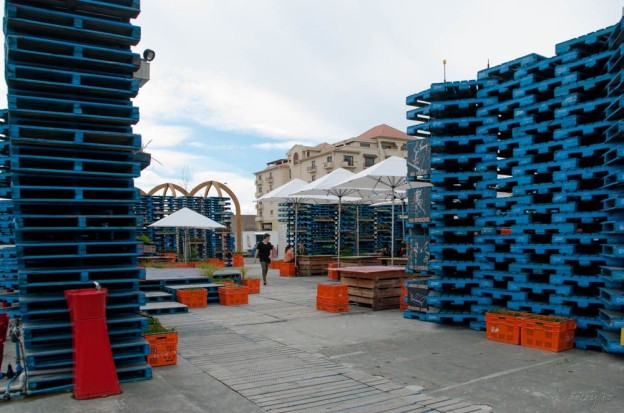On June 18, NPR’s Planet Money did a story on CHEP and their “better blue pallets” that are reinventing the pallet industry.
They wondered whether anyone could build a better pallet. Like the mousetrap and the paperclip, it seemed that the design was flawless and could not improve anymore.
They briefly mentioned plastic pallets at the end of the podcast, saying that a company that creates plastic pallets with RFID tracking went bankrupt. As if one company represented the industry as a whole.
Not only that, but this was later corrected as the company was sold to investors after it went into bankruptcy protection and is currently still in business.
Whatever innovative designs appear to change the pallet industry, the design does not dictate material used to build it. Don’t let the pitchforks, torches, and crazy mob make you think otherwise.
Lumber demand on the rise
Although plastic pallets tend to cost more to produce than wood pallets, this might be changing with the increasing demand for lumber.
In an article (subscription required) by Jim T. Ryan of the Pennsylvania’s Reading Eagle, he states that “demand [of lumber] is outstripping supply,” causing price hikes. Grade-A pallets that used to go for $2.50 a piece 2-3 years ago are now costing $5.25.
His article contributes the increasing costs to greater demands from the oil and gas drilling industry, expansion of railroad infrastructures and improving construction markets. Each of these sectors all use wood for certain aspects of their businesses and tend to have deeper pockets than pallet manufacturers and recyclers.
With so many negative factors affecting lumber supply, plus rainfall making it harder for lumber companies to get into the forest to cut wood, costs don’t seem to be on the downswing, forcing some new wood pallet manufacturers to switch to recycled pallet operations.
But, Ryan explains that this is a double edged sword because with fewer new wood pallets being made, there are also less raw materials for recycled pallets to be made from.
While CHEP doesn’t seem too worried as they try to reinvent the wood pallet business, with a rent-them, return-them centered business model, it seems inevitable that these costs won’t eventually reach the consumers/businesses.
Protecting the pallets
CHEP is profitable because it doesn’t seem to spend money except in production of the pallet; meaning servicing and tracking are left to the renters. Regardless if they are blue, have their logo painted on them, or are stored appropriately, one is not immune to theft or mishandling.
CHEP’s stance that people can always tell a CHEP pallet from the rest is a great argument if we live in a world devoid of paint thinner or different color paints. It is a very idealistic sentiment that might have worked well in Australia after World War II but now?
When the pallets go missing, it is still the renter’s responsibility to find them or continue paying premiums. Although the premium is not that expensive, what if those pallets never reappear? Does one continue to pay rent for it indefinitely or does one bite the bullet and pay for the pallet to remove it off the books?
Either way, you still don’t have those pallets.
In the end of the day, will a business even spend the money to protect their rented investment or allow them to slowly be picked off like so many unsuspecting sheep.
The plastic advantage
When it comes down to truly investing in the future of your company, plastic pallets allow for RFID tracking, don’t splinter, shatter, or give blisters, and a business is more likely to keep tabs of pallets they own than those they are just renting.
When one owns something, there is a difference in mentality than when just renting. Plus, if library books are any indication of the inflated prices of replacing rented items, then it will be a wiser decision to purchase your own and save yourself the headache and hard earned money.
Here are the things that you should consider when deciding whether to make the switch:
– How much are you spending on non-plastic pallets?
– How much are you spending on pallet repairs?
– Which is better suited for your industry? In other words, do you keep most of your pallets in your warehouse or do you need to use them for shipping as well?\
– How often do your customers send your pallets back?
– Have any of your employees been injured by a non-plastic pallet (splinters, cuts, etc.), and has this affected productivity?
Photo by Jocelyn Kinghorn / CC 2.0
About Brian Pigott
Brian Pigott is an engineer and customer-centric entrepreneur. Brian is the Managing Director of One Way Solutions.


 Brian Pigott
Brian Pigott  July 10, 2014
July 10, 2014 